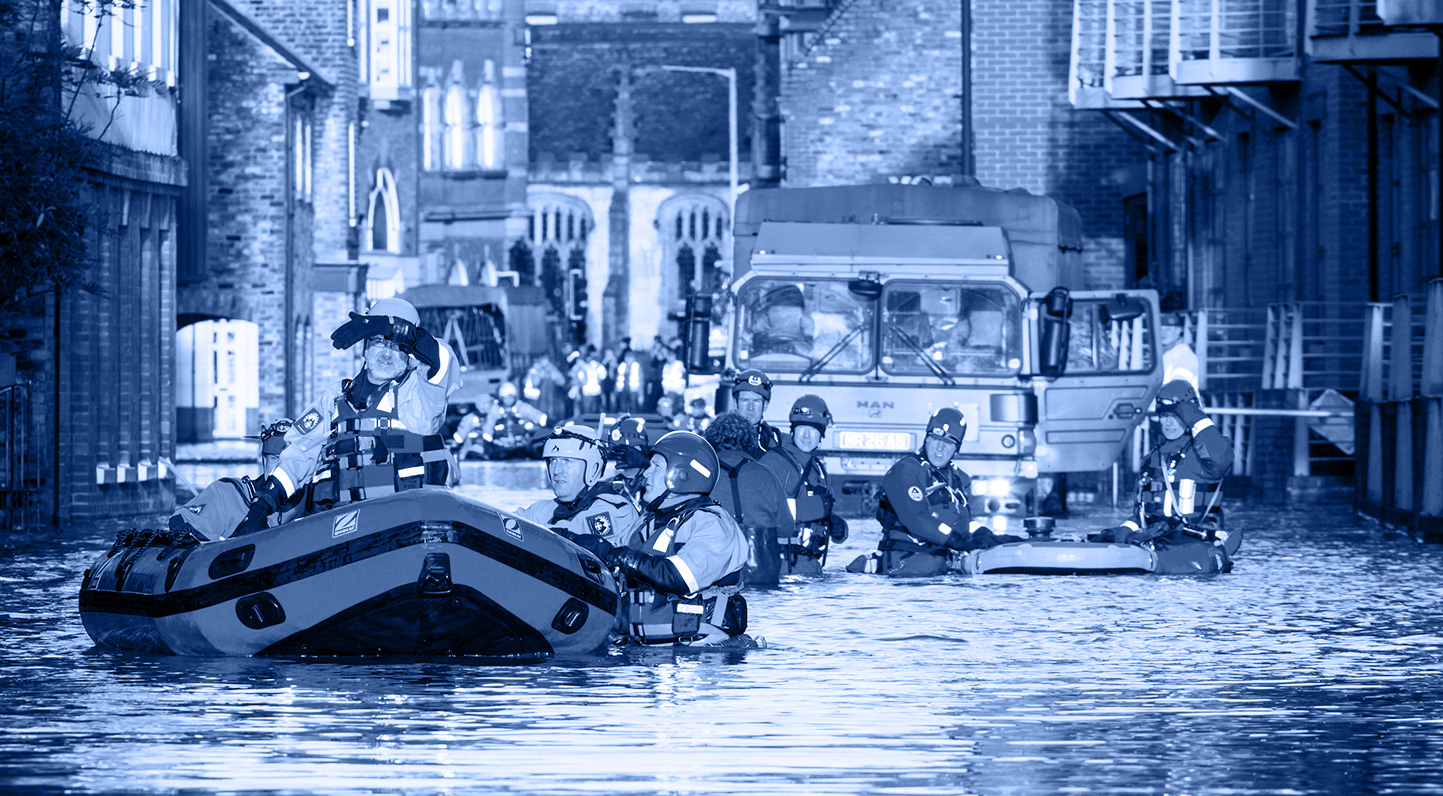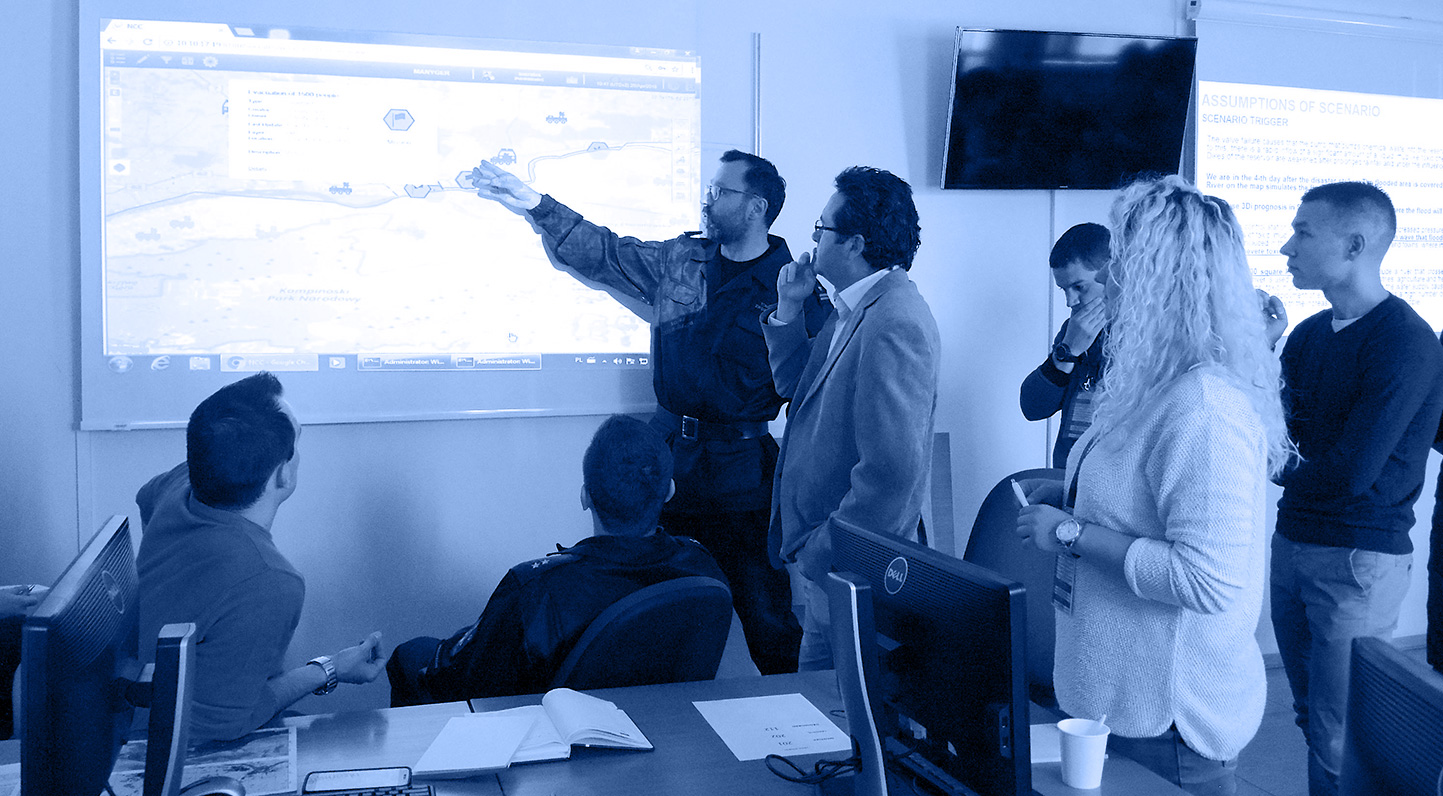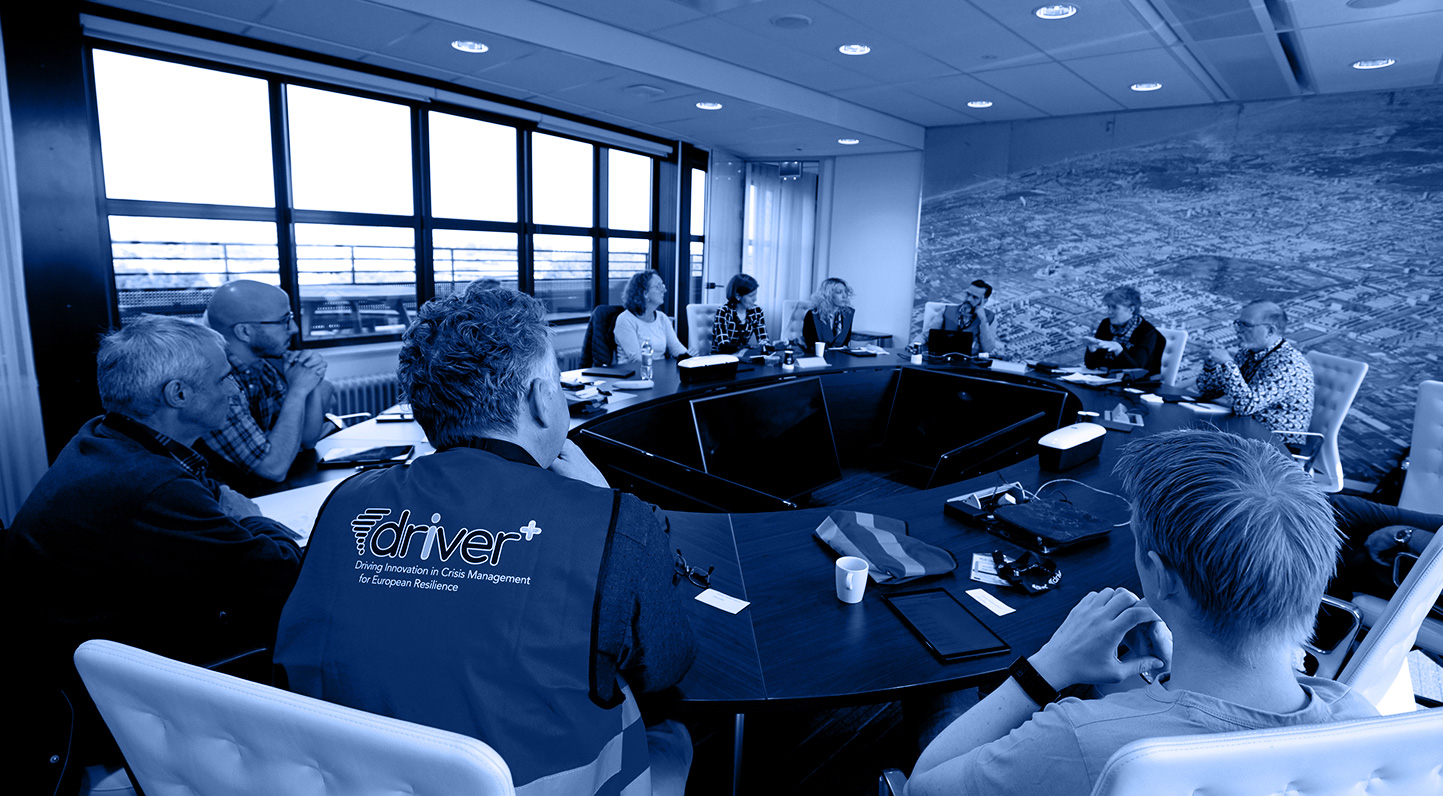impact of each solution
Evaluation coordinator
Practitioner coordinator
Technical coordinator
Solution providers
About
What this tool
is for
The need for innovative solutions to deal with crisis situations stems from the fact that crisis management as such is taking place in complex and dynamic societies. This complexity is caused by several factors, such as increased digitalisation and the growing movement of people across borders and countries. The emergence of new solutions to tackle new and complex challenges also means that the solutions we come up with can have consequences that are more complex than before. These consequences – or, in other words, the impact – can be positive and desired (such as increased efficiency), but there might also be impacts that are negative or unintended. When talking about societal impact in this context, we mean something different than how well the solutions work. A new solution to a challenge can be very efficient in producing the desired effects, but at the same time have tremendous negative impacts on the society of which it is part. For example, the aim of a SIA is not to assess whether a crowd-tasking solution would make response activities more time-efficient, but how a crowd-tasking solution can be deployed to foster a culture of trust in society so that communities feel safe when they are in a crisis situation.
The objective of doing a SIA is to ensure that the implementation of CM solutions maximises its benefits and minimises its burdens, especially those burdens borne by people. Burdens and benefits may not be directly measurable or quantifiable and are often hard to consider exactly for this reason. Nonetheless, they are important, and by identifying potential societal impacts in advance, in particular two advantages are evident:
- Better decisions can be made about which solutions should be employed, and how they should be employed.
- Mitigating actions can be implemented to minimise the harm and maximise the benefits from a specific solution.
In the larger societal context, by achieving these advantages, other benefits include positive impacts such as accountability and acceptability:
- Accountability means that CM participants are in various ways responsible for what they do and should be able to give a satisfactory justification for it.
- Acceptability of solutions, since crisis managers depend on the society accepting the CM solutions, especially if the solutions are participatory in the sense that they require interactions with the public.
Acceptability also relates to issues of sustainability, since solutions that are developed and implemented with the broader society in mind have a larger chance of avoiding controversy and being adopted, in addition to making the implementation more efficient and effective.

A SIA can be carried out in many different contexts, and for many different purposes, which makes it difficult to give a universal definition of what it entails. The starting point for the SIA Framework developed in the DRIVER+ project is that an assessment of what a certain solution does to a society, means thinking about how it impacts the people in it. While some categories of impact are easier to identify and mitigate than others, there is no easy checklist to identify potential societal issues. For example, privacy-related impacts might be easier to recognise due to high public attention of the topic and to the emergence of European-wide legislation. On the other hand, the impact of certain solutions on societal values addresses impacts that exceed calculability, not least because most of these impacts are long-term and often unintended.
While SIA can be challenging to do in everyday CM operations due to a lack of time and efforts, the TGM facilitates SIA as a natural step in preparing a trial. In order to understand the concept of SIA better, let’s use the example of trial Poland. This trial dealt with the following research question: How can cross-border resource management be supported through sociotechnical solutions during multi-stakeholder longterm rescue operations? In other words, which technologies and/or methodologies can provide an added value for rescue operations? When we evaluate a given solution, be it a new technology or a new methodology, we always need to step back and wonder if, together with the added value it may bring, there are also new problems that it generates. When setting up a trial, issues related to the societal impact of our activities occupy a central role. This is because we recognise that there is a mutual relationship between technical objects, the natural environment and social practice. The technologies do not operate in a vacuum; rather, they exist in a social context that is impacted by them in different ways.

Using trial Poland as illustration, relevant steps to take for assessing societal impacts are:
1. IDENTIFY STAKEHOLDER GROUPS/ COMMUNITIES:
The first step would be to identify the stakeholders and the community that could potentially be impacted by the implementation of the solution. Here, relevant questions to ask would start with “how could solution X with all its functionalities have an impact on the stakeholder groups or communities included in this context?” For example, who are the stakeholder groups or communities that could potentially be affected by Drone Rapid Mapping? General society, practitioners, law enforcement agencies? The assessment should be made with these in mind.
2. COLLECT BACKGROUND INFORMATION:
If relevant, collect reference information covering key social issues of the impacted communities such as community history, culture and key events that have shaped the development of the community. Are there known vulnerabilities in the community? Specific social challenges? Who are the major industrial actors? In the example of trial Poland, relevant questions could be: Are there reasons to believe that the community where the Drone Rapid Mapping will be carried out could find it problematic? Have there been controversies regarding the use of drones in this area / region / country?
3. GET AN OVERVIEW OF LEGISLATION AND POLICIES:
Provide an overview of relevant national/ EU legislation and policies that complement the mitigation measures (Step 5) that are directly related to the trial. For trial Poland, the maps generated by the drone can be viewed and analysed in the dedicated geoportal or any GIS environment already utilised by CM institutions. Yet the images that those maps were based upon may raise issues of privacy for individual people and their property; therefore, relevant legal or regulatory considerations would be for example data protection law or local airspace regulation for the use of drones. This step is important for making an assessment, and depending of the trial setup, it could even be relevant to contemplate whether CM activities might challenge other human rights (for example when dealing with vulnerable populations). The added value for CM generated by the maps cannot automatically overrule individual rights of other people.
4. IDENTIFY AND PREDICT IMPACTS:
This is the main part of the SIA, where a structured assessment, based on the information acquired in the previous steps takes place. The full aim is to identify potential direct social impacts and try to predict their significance, duration and extent. The SIA criteria listed in the framework should be used to structure this thinking, but the idea is not to say something about each and every criteria. In some cases the impacts may be rather obvious, and isolated maybe to issues of privacy and data protection, in which case only that one criteria might be relevant; yet, in other cases the societal issues might be more complex. In trial Poland, for example, we used both simulated tabletop and field exercises, which required the use of dedicated observers, who recorded and documented the actions. For evaluating this part of the trial, different data was collected, such as questionnaires filled in by the observers and practitioners. As an example of potential societal impact, the personal data emanating from these questionnaires could have implications for the ones involved, in the sense that if the identification of a firefighter or a practitioner is revealed, this can compromise the depth of their answers.
A second issue relates to the departing assumption of trial Poland, i.e. that 3D models and 2D orthophoto maps of the endangered area is a solution that will positively influence the time and accuracy of the needs assessment, which will better support long-term rescue operations. With this departing assumption, it was natural that the selected solution was drone rapid mapping, which enables fast generation of orthophoto maps, based on imagery acquired by a drone. It is important to realise, though, that a different departing assumption could have led to the choice of a different solution. A prior assumption towards a specific outcome impacts the sociotechnical choices that we make.
5. DESCRIBE MITIGATING MEASURES AND FOLLOW UP:
In order to reduce the risk of negative unintended impacts, and/or to increase the possibility for positive impact, a list of measures should be made. The list should be based on the impacts identified in the previous step and could include actions such as providing extra follow ups for volunteers, establishing rapport with local community leaders, engaging with the communities, and sharing more information about the activity/solution/trial. A plan should be made to describe how the mitigating measures will be followed up. For trial Poland for example, the anonymity of the participants in the trial was an issue; i.e. that the anonymity of an observer should be preserved to ensure independence. Therefore, specific measures regarding both informed consent and anonymity had to be put in place, so that this data collection could take place. A mitigating measure relevant for the issue of departing assumptions would include thorough deliberation regarding the scenario selection, and carefully defined research questions.

Link
- This is not a physical tool but a process
